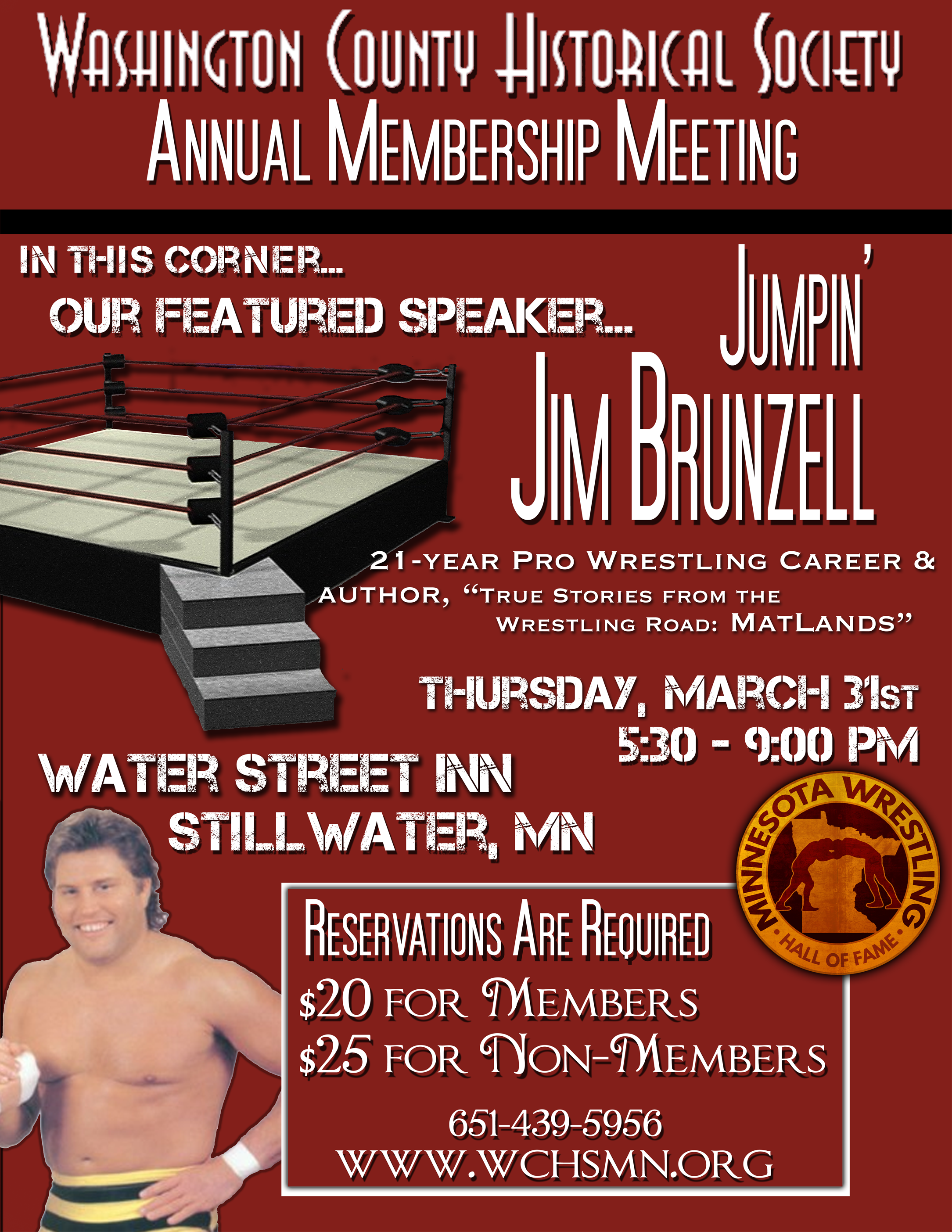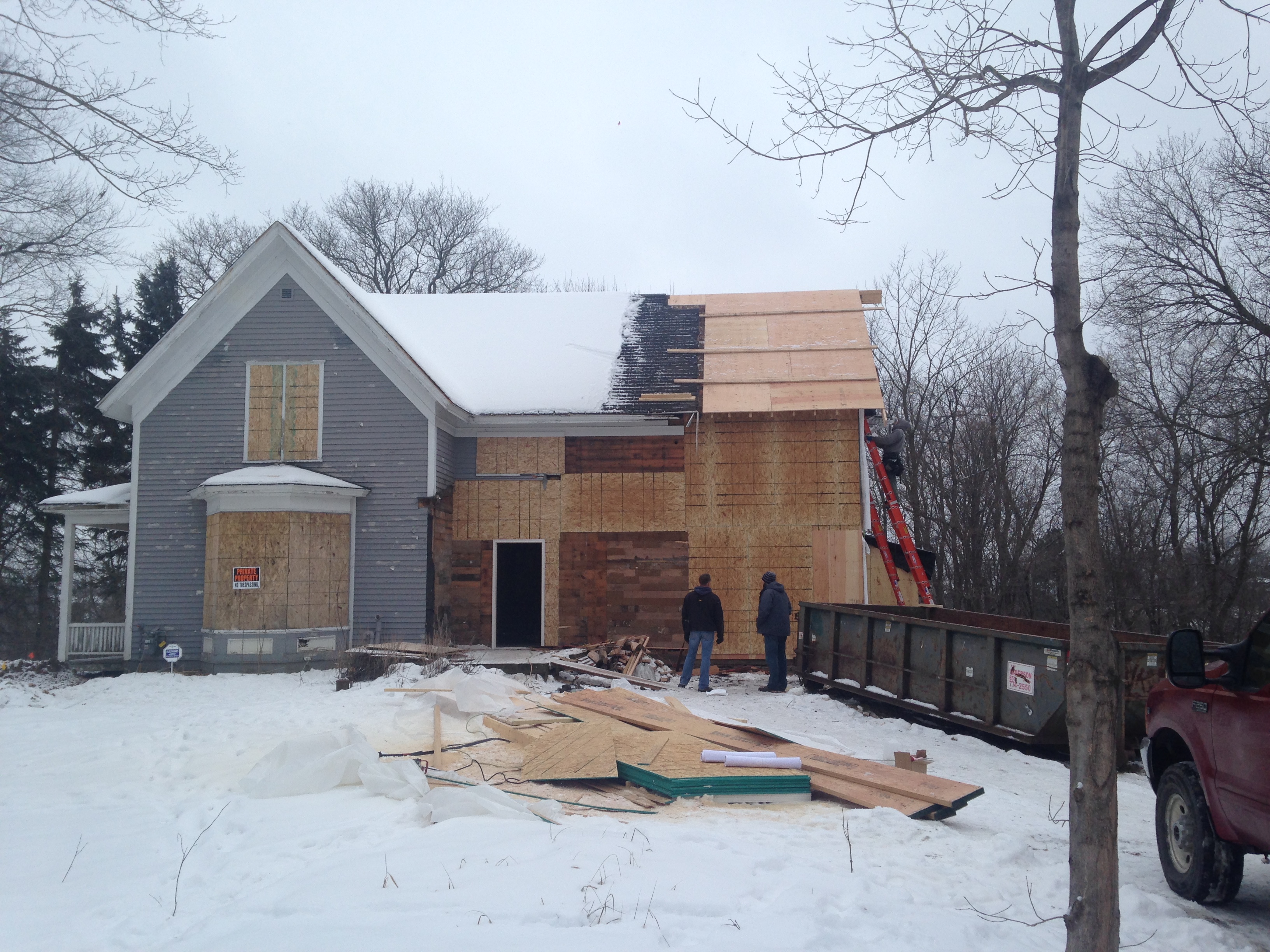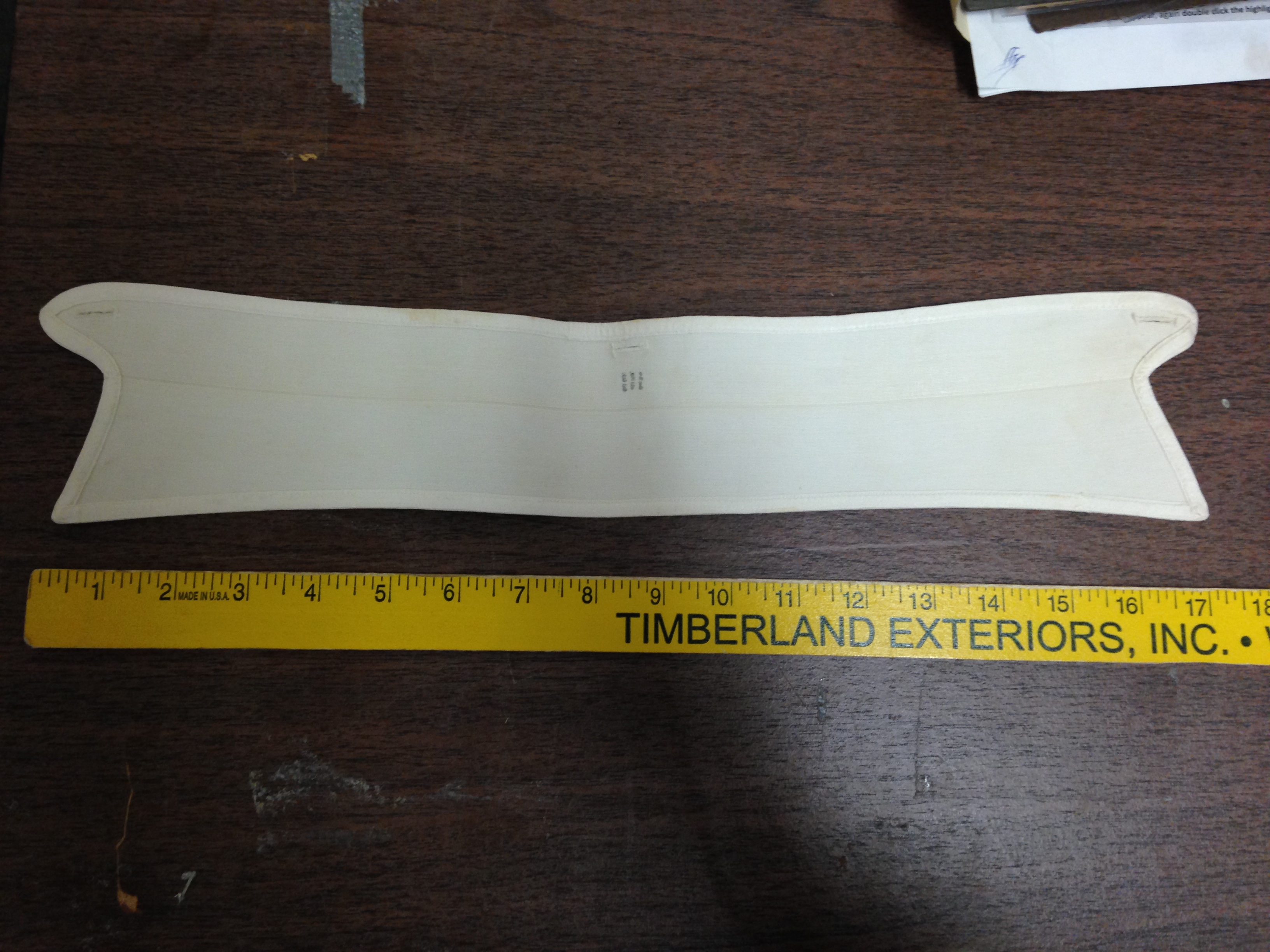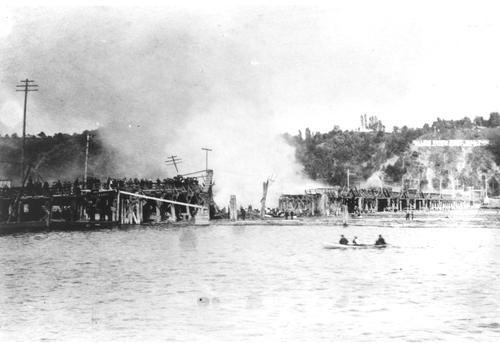This issue: Contents
Tuesday, January 26, 2016
- Editor’s Note
- WCHS News: WCHS Annual Meeting with Jumpin’ Jim Brunzell
- WCHS News: Boutwell Update
- What Is This Thing?!
- Old News: Stillwater’s 1864 Interests
- Featured Article: Troubled Bridge Over Equally Troubled Waters
Editor’s Note
Howdy readers!
I’d like to start off by saying “Thank You!” to everyone who braved the cold for our Ice Cream Social on the 16th. With a -20 wind chill, the turn out wasn’t huge – but it was definitely enthusiastic!
Head over to our Facebook page to see a few photos from the day (and please join us in crossing our fingers and wishing for a warmer day next year!)
We’ve very excited to announce that retired professional wrestler and author Jumpin’ Jim Brunzell will be leaping from the top-rope as our Featured Guest speaker for our Annual Membership Meeting on Thursday, March 31st. Head down to our first News story for all the details.
I swung by the Historic Boutwell House last week and I’ll give you a quick update on the status of WCHS’ preservation efforts in our second bit of News.
Later on, I’ll try to step-up my game for this issue’s “What Is This Thing?!”
In today’s Old News, we’ll discover what news items on the national stage captured Stillwaterites…Stillwaterans…Stillwaterese..people from Stillwater’s attention in January of 1864.
You probably read that the current St. Croix Crossing construction project has been delayed – well, this is only keeping with the long tradition of having trouble with bridges in the St. Croix Valley! At least the new bridge hasn’t collapsed into the river! Check out our Featured Article to read about the Lift Bridge’s rickety predecessor.
Want to learn more about the history of Washington County? “Like” WCHS on Facebook and follow us on Twitter!
Sean Pallas
Historical Messenger editor and Warden’s House Site Manager
spallas.wchs@gmail.com
WCHS News
WCHS Annual Membership Meeting with Jumpin’ Jim Brunzell
 The Washington County Historical Society Annual Meeting will be held at the Water Street Inn in Stillwater on Thursday, March 31st.
The Washington County Historical Society Annual Meeting will be held at the Water Street Inn in Stillwater on Thursday, March 31st.
The evening will begin with a social hour at 5:30 PM followed by dinner at 6:30 PM. The meeting will begin at 7:30 with an election of board members and conclude with our Featured Speaker – “Jumpin” Jim Brunzell.
Over the course of his 21 year long career, Brunzell trained under the legendary Verne Gagne with Ric Flair and the Iron Sheik and even faced former Minnesota Governor Jesse Ventura in the ring. At the meeting, Brunzell will discuss his long history with professional wrestling in Minnesota and his association with the Minnesota Wrestling Hall of Fame.
Brunzell will also be selling and signing copies of his new book with “True Stories from the Wrestling Road: MatLands”
Reservations are required.
WCHS Members – $20.00 Reserve Tickets Online
Non-Members – $25.00 Reserve Tickets Online
For more information or to make reservations contact Brent Peterson at 651-439-5956 or brent.peterson@wchsmn.org
 Boutwell Update
Boutwell Update
The Washington County Historical Society’s preservation efforts at the historic Rev. Boutwell House are continuing through the snowy months.
Working with professional architects, preservationists, and contractors – we are doing our absolute best to preserve the integrity of this beautiful piece of Washington County history.
As you can see in the photo – one of the biggest improvements is the closing of the giant hole in the back portion of the house created when the demolition process began last year.
We’re also happy to report that we have been able to save some of the original wood beams of the home and will be able to recycle them back into the re-construction of the home.
Stay tuned for more updates!
Thank you everyone who has supported the project up to this point!
Preserving the Boutwell House is a massive undertaking for the Historical Society…not to mention an expensive one! Honestly, the best and most direct way to support the Boutwell House is to make a tax-deductable Donation!
Thank you and we’ll see you at the Boutwell Open House this Spring!
What is This Thing?!

What Is This Thing?! (Round 26)
I guess I was way too easy on all of you for last week’s What Is This Thing?!
Last issue’s item generated the biggest response I’ve ever gotten for a “What Is This Thing?!” challenge! And all of you knew the artifact was indeed a carpet beater. (Although a few folks also offered that they were good for whacking grasshoppers and leprechauns).
I even got a few personal memories from a few readers! One of you wrote that:
“This entry is one that leaves me exhausted. I recall beating the carpets with one of those nasty things. Two things come to mind: the cloud of dust that inevitably rose from a beaten carpet (even when ostensibly kept clean) and the weariness that I felt in the arms after a session of spring cleaning.”
I absolutely love to hear when folks have personal connections to the artifacts in our collection!
Thanks to everyone who took a guess at last week’s item!
Can you identify the WCHS artifact photographed above? Can you guess its use? If you’d care to venture an answer, you can send an email to me at spallas.wchs@gmail.com, tweet @WCHSMN, or post your guess on our Facebook page.
Good luck!
Full Image
And if you still aren’t sure – here’s the reverse of today’s item with some writing on it…maybe that’ll give you a hint! Reverse Image
Old News
Stillwater’s 1864 Interests
By 1864, the Civil War, which everyone had assumed would draw to a swift and decisive conclusion, was somehow entering it’s third year.
And all throughout those years men from Stillwater and Washington County had been out East fighting and dying in the Union’s efforts to put down the South’s Rebellion.
But what of those back home? Naturally, as you’d expect, many of the articles discuss the on-going war. Including an article highlighting the then-current events featured in John Christgau’s Incident at the Otterville Station.
Below is a small sampling of national news blurbs re-printed on the pages of the Messenger.
Note the consistently dismissive attitude towards news from the Confederacy. The editor’s comments insult both the “rebel Navy” and Confederate President Jefferson Davis.
The list also interestingly shows an interest in astronomy of the general public at the time.
News Briefs – Stillwater Messenger – January 26, 1864
– John B. Gough and E. P. Whipple are lecturing in Washington
– There are sixty-six woolen factories in Rhode Island, having 225 sets of cards.
– The rebel navy numbers 507 officers and 874 men The latter are certainly well officered.
– They are having snow shoe races in Kingston, Canada
– A moose for the King of Italy, arrived in Boston on Saturday, from Halifax.
– There are now 187 National Banks organized [illegible] capital of thirty millions.
– Four comets, and three planets were discovered last year.
– Three hundred and six thousand and five hundred and forty-two barrels of mackerel were inspected in Massachusetts last year. The largest number since 1852.
– Two noblemen have been heavily fined in England for shooting peas at ladies on top of a cab. Dignified recreation!
– Over fifty thousand dollars was paid out in the city to farmers last week for wheat and pork. That is a tolerable fair week’s work. Prices have generally ruled high, thus giving the farmer a good profit on this labor and time
– A Nashville paper gives the following, showing the number of men Tennessee has furnished to the Federal cause:
Calvary: 12,000
Cavalry mustered into the service in new regiments not full: 1,300
Infantry: 11,000
Artillery: 1,100
Infantry [negroes]: 5,960
Artillery [negroes]: 2,600
Total: 33,360
This is doing well when we consider the difficulties which have been encountered by authorities. Recruiting still goes on briskly.
– Prof. James Watson, who recently discovered the new comet, writes to the Detroit Advertisers that the comet is now rapidly approaching the earth, and receding from the sun. Its distance from the earth, January 12th, was 45,000,000 miles. It will continue to approach the earth until February 1st, when its distance will be only 15,000,000 of miles, and its brilliancy five times greater than at the present time. It is probably that it will then be visible to the naked eye. After February 1st, it will recede from both the earth and sun. Should the comet become visible to the naked eye, it may first be seen on the evening of January 25th – before the moon rises – in the north-west, about 10 degrees south, and a little east of the bright star Alpha Cephei.
– A refugee from Richmond, a man of note, who has just reached Baltimore, predicts that when the crisis comes Jeff Davis will cut his throat! He says the same of Pickens of South Carolina, and some others.
Featured Article
Troubled Bridge Over Equally Troubled Waters
By Brent Peterson
The first river crossing at Stillwater across the river was opened in 1876. It was a grand site and even though it was a toll bridge, people seemed to enjoy the convenience of going right across to the Wisconsin side. There was a pontoon section that would swing open and allow the rafts of logs and lumber go through. All seemed to be working well until Sunday October 10, 1886.
On that date a cattle dealer named John Foster arrived in town during the morning with 98 horses and mules which he had driven overland from River Falls and going to St. Paul. The animals were stopped on the approach span of the bridge on the Stillwater side at the request of the bridge master. There about a dozen men were counting the horses and mules when suddenly with a crash that was heard more than three blocks away, the span gave way and the animals and men dropped twenty feet into the water. Thankfully all the men and all but three mules survived the crash. The Stillwater Gazette said: “an examination of the span which broke disclosed the fact that there was not a sound piece of timber below the platform. All were rotten, the rusty iron rods pulled through the spongy wood, and the worm-eaten supporting beams gave way at once. Many people who examined the span asked the question: ‘How in the name of common sense do you suppose it held up the heavy four horse loads of lumber which have been passing over it so long?”
The bridge was quickly repaired and life went on as normal. But eleven years later the bridge again would collapse because of too many cattle on the spans.
On Friday September 10, 1897 a herd of 50 cattle were being driven across the bridge to the Wisconsin side. These cattle belonged to Isaac Staples and many of the cattle were coming from his Maple Island Farm and were going to pasture in Wisconsin. The span next to the pontoon on the Stillwater side started to creak and then gave way. About 30 cattle fell into the water while others had crossed the span just before it collapsed.
 A portion of the bridge that fell landed flat in the water creating a raft of sorts. Several of the animals were trapped on that, one cow landed on its feel on the lower platform without even getting wet. However, the vast majority of the animals that fell went directly into the water. They were unable to gain any footing and were swimming about in a terrified and helpless manner, snorting and bellowing with fear. The Bronson & Folsom steamer, “Baby,” came quickly to rescue the animals and help with the clean up of the debris. Again, the breaking of the principal cross-timber caused the accident. The break was caused by one end of the huge timber being rotten. Another collapse of the wooden pontoon bridge happened on September 15, 1904 when the wooden structure caught fire. After the fire department and spectators gathered on the burning bridge, it collapsed sending fire fighters and spectators into the water. This collapse caused the death of three people.
A portion of the bridge that fell landed flat in the water creating a raft of sorts. Several of the animals were trapped on that, one cow landed on its feel on the lower platform without even getting wet. However, the vast majority of the animals that fell went directly into the water. They were unable to gain any footing and were swimming about in a terrified and helpless manner, snorting and bellowing with fear. The Bronson & Folsom steamer, “Baby,” came quickly to rescue the animals and help with the clean up of the debris. Again, the breaking of the principal cross-timber caused the accident. The break was caused by one end of the huge timber being rotten. Another collapse of the wooden pontoon bridge happened on September 15, 1904 when the wooden structure caught fire. After the fire department and spectators gathered on the burning bridge, it collapsed sending fire fighters and spectators into the water. This collapse caused the death of three people.
After the collapse in 1897 the newspaper said that the incident had raised “considerable talk among the business men” in Stillwater about building a new bridge. Even one city council member remarked: “the old bridge had already caused the city more outlay than would have been necessary to put up a handsome steel one.”
The Stillwater’s current and iconic lift bridge was constructed in 1931 and has thus-far served travelers much more reliably than her predecessor.
 The Washington County Historical Society Annual Meeting will be held at the Water Street Inn in Stillwater on Thursday, March 31st.
The Washington County Historical Society Annual Meeting will be held at the Water Street Inn in Stillwater on Thursday, March 31st. Boutwell Update
Boutwell Update
 A portion of the bridge that fell landed flat in the water creating a raft of sorts. Several of the animals were trapped on that, one cow landed on its feel on the lower platform without even getting wet. However, the vast majority of the animals that fell went directly into the water. They were unable to gain any footing and were swimming about in a terrified and helpless manner, snorting and bellowing with fear. The Bronson & Folsom steamer, “Baby,” came quickly to rescue the animals and help with the clean up of the debris. Again, the breaking of the principal cross-timber caused the accident. The break was caused by one end of the huge timber being rotten. Another collapse of the wooden pontoon bridge happened on September 15, 1904 when the wooden structure caught fire. After the fire department and spectators gathered on the burning bridge, it collapsed sending fire fighters and spectators into the water. This collapse caused the death of three people.
A portion of the bridge that fell landed flat in the water creating a raft of sorts. Several of the animals were trapped on that, one cow landed on its feel on the lower platform without even getting wet. However, the vast majority of the animals that fell went directly into the water. They were unable to gain any footing and were swimming about in a terrified and helpless manner, snorting and bellowing with fear. The Bronson & Folsom steamer, “Baby,” came quickly to rescue the animals and help with the clean up of the debris. Again, the breaking of the principal cross-timber caused the accident. The break was caused by one end of the huge timber being rotten. Another collapse of the wooden pontoon bridge happened on September 15, 1904 when the wooden structure caught fire. After the fire department and spectators gathered on the burning bridge, it collapsed sending fire fighters and spectators into the water. This collapse caused the death of three people.